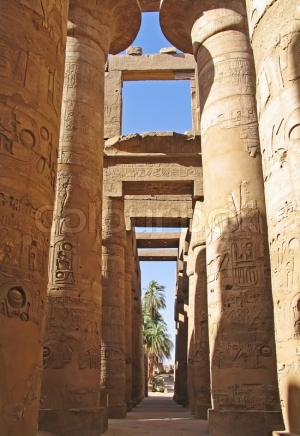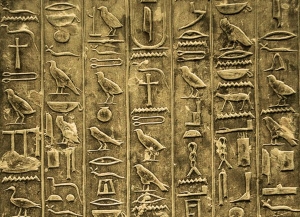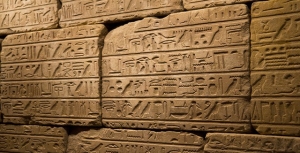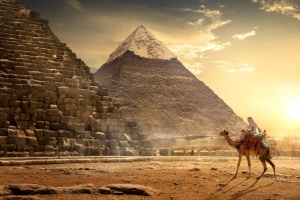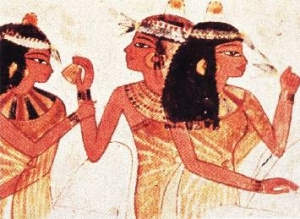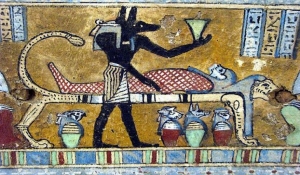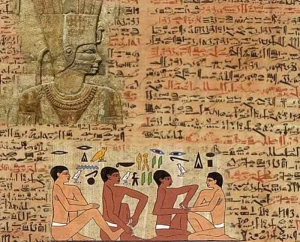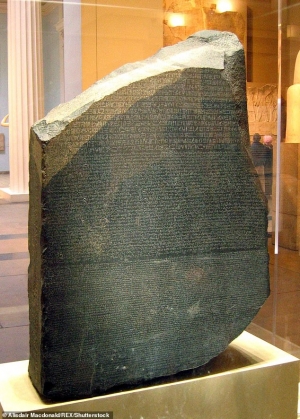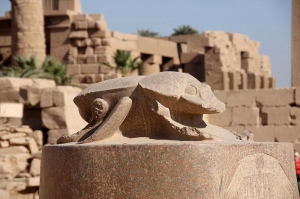+2 0122-345-3028
This email address is being protected from spambots. You need JavaScript enabled to view it.
Super User
Karnak Temple
Karnak Temple
The temple of Karnak used to be connected to the Luxor Temple via a long stone processional street called a Dromos. This road was built along a canal that once connected the Nile to the Temple. There was a dock in ancient times, but now all that is left is the quay and the raised dais. To arrive at the entrance one follows the Dromos with its crio-sphinxes. They have the head of a Ram and the body of a lion and are symbolic of the God Amun. Arriving at the temple, there is a statue of Ramesses II with his son between his feet.
The Temple of Karnak is actually three main temples, smaller enclosed temples, and several outer temples. This vast complex was built and enlarged over a thirteen hundred years period. The three main temples of Mut, Monthu and Amun are enclosed by enormous brick walls. The Open Air Museum is located to the north of the first courtyard, across from the Sacred Lake and displays various statues found through out the temple complex. The main complex, The Temple of Amun, is situated in the center of the entire complex. The Temple of Monthu is to the north of the Temple of Amun, while the Temple of Mut is to the south.
The Second Pylon of Karnak was built by Ramesses II. The Ptolemies did some extensive repairing and some new building on the center section.
The Hypostyle Hall is found after passing through the Second Pylon. The hall is considered to be one of the world's greatest architectural masterpieces. Construction began during Ramesses it's reign. He was the king who founded the Nineteenth Dynasty and was king for only one year. The work continued under Seti I (1306 - 1290 BC). Seti I also built the Temple of Abydos and many other temples. The hall was completed by Seti's son, Ramesses II.
The walls, ceilings and columns are painted with the natural earth tones. The light that was allowed in originally kept most of the hall in shadows. The hall ceiling was 82 feet high and was supported by 12 papyrus columns. The columns are made of sandstone and set in two rows of six. Each row is flanked on either side by 7 rows of columns that are 42 feet (12.8m) high. Each row has 9 columns; however the inner rows have 7 columns. The reliefs throughout the hall contain symbolism of Creation. The reliefs in the northern half are from the time period of Seti I, while those in the southern half are done by his son Ramesses II.
The outer walls of the Hypostyle Hall are covered with scenes of battle. It is unsure whether these scenes are based on historical fact or of ritual significance. It is thought that when the battle details are very precise, real events are most likely involved. Seti's battles take place in Lebanon, southern Palestine and Syria. The southern walls of Ramesses II have hieroglyphic texts which actually record details of the Hittite king and Ramesses II signing a peace treaty in the twenty-first year of Ramesses reign. This is the first evidence found for a formal diplomatic agreement and is certainly historical.
Leaving the hypostyle hall through the third pylon you come to a narrow court where there once stood several obelisks. One of the obelisks was erected by Tuthmosis I (1504 - 1492 BC) who was the father of Hatshepsut. This obelisk stands 70 feet (21.3m) tall and weighs about 143 tons. Beyond this obelisk is the only remaining Obelisk of Hatshepsut (1473-1458 BC). It is 97 feet (29.6m) high and weighs approximately 320 tons. Besides the Lateran obelisk in Rome (101 feet high), this is the tallest standing obelisk. The top of the obelisk was visible for 50 miles (80 km). Tuthmosis III (1479-1425 BC), Hatshepsut's successor, built a high wall around her obelisk. This wall hid the lower two-thirds but left the upper towering above. It has been thought that this was an easier and cheaper way of destroying her memory than actually tearing it down and removing it.
The Sixth Pylon, which was built by Tuthmosis III, leads into a Hall of Records in which the king recorded his tributes. Very little remains of this archive beyond two granite pillars. Just beyond these pillars lies the Holy of Holies or sanctuary. Originally it was the oldest part of the temple. The present sanctuary was built by the brother of Alexander the Great, Philip Arrhidaeus (323-316 BC) who was the King of Macedonia. The present sanctuary, built on the site of the earlier sanctuary built by Tuthmosis III, contains blocks from the Tuthmosis sanctuary and still contain Tuthmosis' inscriptions. The sanctuary is built in two sections. Why this was done is not known.
Papyrus
Papyrus
Papyrus is a thick paper-like material produced from the pith of the papyrus plant, Cyperus papyrus,a wetland sedge that was once abundant in the Nile Delta of Egypt. Papyrus is first known to have been used in ancient Egypt (at least as far back as the First dynasty), but it was also used throughout the Mediterranean region. Ancient Egypt used this plant as a writing material and for boats, mattresses, mats, rope, sandals, and baskets. Chemically, papyrus is composed of 57 percent cellulose, 27 percent lignin, nine percent minerals, and seven percent water.
A section of the Egyptian Book of the Dead written on papyrus
Papyrus was first manufactured in Egypt as far back as the third millennium BCE.In the first centuries BCE and CE, papyrus scrolls gained a rival as a writing surface in the form of parchment, which was prepared from animal skins.Sheets of parchment were folded to form quires from which book-form codices were fashioned. Early Christian writers soon adopted the codex form, and in the Græco-Roman world it became common to cut sheets from papyrus rolls to form codices.
Codices were an improvement on the papyrus scroll as the papyrus was not pliable enough to fold without cracking and a long roll, or scroll, was required to create large volume texts. Papyrus had the advantage of being relatively cheap and easy to produce, but it was fragile and susceptible to both moisture and excessive dryness. Unless the papyrus was of perfect quality, the writing surface was irregular, and the range of media that could be used was also limited.
Papyrus was replaced in Europe by the cheaper locally-produced products parchment and vellum, of significantly higher durability in moist climates, though Henri Pirenne's connection of its disappearance with the Muslim overrunning of Egypt is contended.[5] Its last appearance in the Merovingian chancery is with a document of 692, though it was known in Gaul until the middle of the following century. The latest certain dates for the use of papyrus are 1057 for a papal decree (typically conservative, all papal "bulls" were on papyrus until 1022), under Pope Victor II,[6] and 1087 for an Arabic document. Its use in Egypt continued until it was replaced by more inexpensive paper introduced by Arabs. Papyrus was documented as in use as late as the 12th century in the Byzantine Empire, but there are no surviving examples. Although its uses had transferred to parchment, papyrus therefore just overlapped with the use of paper in Europe, which began in the 11th century.[citation needed]
Papyrus came in several qualities and prices; these are listed, with minor differences, both by Pliny and Isadora of Seville.
Until the middle of the 19th century only some isolated documents written on papyrus were known. They did not contain literary works. The first discovery of papyri rolls in modern days was made at Herculaneum in 1752. Before that date the only papyri known were a few survivals from medieval times.
Etymology
The English word papyrus derives, via Latin, from Greek πάπυρος (papuros).Greek has a second word for papyrus, βύβλος (bublos, said to derive from the name of the Phoenician city of Byblos). The Greek writer Theophrastus, who flourished during the 4th century BCE, uses papuros when referring to the plant used as a foodstuff and bublos for the same plant when used for non-food products, such as cordage, basketry, or a writing surface. The more specific term βίβλος biblos, which finds its way into English in such words as bibliography, bibliophile, and bible, refers to the inner bark of the papyrus plant. Papyrus is also the etymon of paper, a similar substance.
It is often claimed[by whom?] that Egyptians referred to papyrus as pa-per-aa [p3y pr-ˁ3] (lit., "that which is of Pharaoh"), apparently denoting that the Egyptian crown owned a monopoly on papyrus production. However no actual ancient text using this term is known. In the Egyptian language, papyrus was known by the terms wadj [w3ḏ], tjufy , and djet . The Greek word papyros has no known relationship to any Egyptian word or phrase.
Documents written on papyrus
Bill of sale for a donkey, papyrus ; 19.3 x 7.2 cm. MS Gr SM2223 Houghton Library, Harvard University
The word for the material papyrus is also used to designate documents written on sheets of it, often rolled up into scrolls. The plural for such documents is papyri. Historical papyri are given identifying names—generally the name of the discoverer, first owner or institution where they are kept—and numbered, such as "Papyrus Harris I". Often an abbreviated form is used, such as "pHarris I". These documents provide important information on ancient writings: they give us the only extant copy of Menander, the Egyptian Book of the dead, Egyptian treatises on medicine (the Ebers Papyrus) and on surgery (the Edwin Smith papyrus), Egyptian mathematical treatises (the Rhind papyrus), and Egyptian folk tales (the Westcar papyrus). When, in the 18th century, a library of ancient papyri was found in Herculaneum, ripples of expectation spread among the learned men of the time. However, since these papyri were badly charred, their unscrolling and decyphering is still going on today.
Manufacture and use
Different ways of cutting papyrus stem and making of papyrus sheet
Papyrus plant Cyperus papyrus at Kew Gardens, London
Papyrus plants at Syracuse, Sicily
Papyrus is made from the stem of the papyrus plant, Cyperus papyrus. The outer rind is first stripped off, and the sticky fibrous inner pith is cut lengthwise into thin strips of about 40 cm (16 in) long. The strips are then placed side by side on a hard surface with their edges slightly overlapping, and then another layer of strips is laid on top at a right angle. The strips may have been soaked in water long enough for decomposition to begin, perhaps increasing adhesion, but this is not certain. It is also possible that the two layers were glued together. While still moist, the two layers are hammered together, mashing the layers into a single sheet. The sheet is then dried under pressure. After drying, the sheet of papyrus is polished with some rounded object, possibly a stone or seashell or round hard wood.
To form the long strip that a scroll required, a number of such sheets were united, placed so that all the horizontal fibres parallel with the roll's length were on one side and all the vertical fibres on the other. Normally, texts were first written on the recto, the lines following the fibres, parallel to the long edges of the scroll. Secondarily, papyrus was often reused, writing across the fibres on the verso. Pliny the Elder describes the methods of preparing papyrus in his Naturalis Historia.
In a dry climate, like that of Egypt, papyrus is stable, formed as it is of highly rot-resistant cellulose; but storage in humid conditions can result in molds attacking and destroying the material. In European conditions, papyrus seems to have lasted only a matter of decades; a 200-year-old papyrus was considered extraordinary. Imported papyrus that was once commonplace in Greece and Italy has since deteriorated beyond repair, but papyrus is still being found in Egypt; extraordinary examples include the Elephantine papyri and the famous finds at Oxyrhynchus and Nag Hammadi. The Villa of the Papyri at Herculaneum, containing the library of Lucius Calpurnius Piso Caesoninus, Julius Caesar's father-in-law, was preserved by the eruption of Mount Vesuvius, but has only been partially excavated.
There have been sporadic attempts to revive the manufacture of papyrus since the mid-18th century. Scottish explorer James Bruce experimented in the late 18th century with papyrus plants from the Sudan, for papyrus had become extinct in Egypt. Also in the 18th century, a Sicilian named Saverio Landolina manufactured papyrus at Syracuse, where papyrus plants had continued to grow in the wild. The modern technique of papyrus production used in Egypt for the tourist trade was developed in 1962 by the Egyptian engineer Hassan Ragab using plants that had been reintroduced into Egypt in 1872 from France. Both Sicily and Egypt have centres of limited papyrus production.
Papyrus is still used by communities living in the vicinity of swamps, to the extent that rural householders derive up to 75% of their income from swamp goods (Maclean et al. 2003b; c). Particularly in East and Central Africa, people harvest papyrus, which is used to manufacture items that are sold or used locally. Examples include baskets, hats, fish traps, trays or winnowing mats and floor mats. Papyrus is also used to make roofs, ceilings, rope and fences. Although alternatives, such as eucalyptus, are increasingly available, papyrus is still used as fuel.
Egyptian hieroglyphs
Egyptian hieroglyphs
Were a formal writing system used by the ancient Egyptians that combined logographic and alphabetic elements. Egyptians used cursive hieroglyphs for religious literature on papyrus and wood. Less formal variations of the script called hieratic and demotic, are technically not hieroglyphs. Various scholars believe that Egyptian hieroglyphs "came into existence a little after Sumerian script, and ... probably [were]... invented under the influence of the latter ", although it is pointed out and held that "the evidence for such direct influence remains flimsy” and that “a very credible argument can also be made for the independent development of writing in Egypt..." (See further History of writing).
Etymology
The word hieroglyph comes from the Greek adjective ἱερογλυφικός (hieroglyphikos), a compound of ἱερός (hierós 'sacred')] and γλύφω (glýphō 'Ι carve, engrave'; see glyph),[5] in turn a loan translation of Egyptian mdw·w-nṯr (medu-netjer) 'god's words'.[6] The glyphs themselves were called τὰ ἱερογλυφικὰ γράμματα (tà hieroglyphikà grámmata) 'the sacred engraved letters'. The word hieroglyph has become a noun in English, standing for an individual hieroglyphic character. As used in the previous sentence, the word hieroglyphic is an adjective, but is often erroneously used as a noun in place of hieroglyph.
History and evolution Hieroglyphs emerged from the preliterate artistic traditions of Egypt. For example, symbols on Gerzean pottery from ca. 4000 BCE resemble hieroglyphic writing. For many years the earliest known hieroglyphic inscription was the Narmer Palette, found during excavations at Hierakonpolis (modern Kawm al-Ahmar) in the 1890s, which has been dated to ca. 3200 BCE. However, in 1998, a German archaeological team under Günter Dreyer excavating at Abydos (modern Umm el-Qa'ab) uncovered tomb U-j of a Predynastic ruler, and recovered three hundred clay labels inscribed with proto-hieroglyphs, dating to the Naqada IIIA period of the 33rd century BCE.[7] The first full sentence written in hieroglyphs so far discovered was found on a seal impression found in the tomb of Seth-Peribsen at Umm el-Qa'ab, which dates from the Second Dynasty. In the era of the Old Kingdom, the Middle Kingdom and the New Kingdom, about 800 hieroglyphs existed. By the Greco-Roman period, they numbered more than 5,000.
Scholars generally believe that Egyptian hieroglyphs “came into existence a little after Sumerian script, and, probably [were], invented under the influence of the latter ...” For example, it has been stated that it is "probable that the general idea of expressing words of a language in writing was brought to Egypt from Sumerian Mesopotamia.” On the other hand, it has been stated that “the evidence for such direct influence remains flimsy” and that “a very credible argument can also be made for the independent development of writing in Egypt...” Given the lack of direct evidence, “no definitive determination has been made as to the origin of hieroglyphics in ancient Egypt.”[14] In 1999, Archaeology Magazine reported that the earliest Egyptian glyphs date back to 3400 BCE which "...challenge the commonly held belief that early logographs, pictographic symbols representing a specific place, object, or quantity, first evolved into more complex phonetic symbols in Mesopotamia."
Hieroglyphs consist of three kinds of glyphs: phonetic glyphs, including single-consonant characters that function like an alphabet; logographs, representing morphemes; and determinatives, which narrow down the meaning of logographic or phonetic words.
Hieroglyphs on an Egyptian funerary stela
As writing developed and became more widespread among the Egyptian people, simplified glyph forms developed, resulting in the hieratic (priestly) and demotic (popular) scripts. These variants were also more suited than hieroglyphs for use on papyrus. Hieroglyphic writing was not, however, eclipsed, but existed alongside the other forms, especially in monumental and other formal writing. The Rosetta Stone contains three parallel scripts – hieroglyphic, demotic, and Greek.
Hieroglyphs continued to be used under Persian rule (intermittent in the 6th and 5th centuries BCE), and after Alexander the Great's conquest of Egypt, during the ensuing Macedonian and Roman periods. It appears that the misleading quality of comments from Greek and Roman writers about hieroglyphs came about, at least in part, as a response to the changed political situation. Some believe that hieroglyphs may have functioned as a way to distinguish 'true Egyptians' from some of the foreign conquerors. Another reason may be the refusal to tackle a foreign culture on its own terms which characterized Greco-Roman approaches to Egyptian culture generally. Having learned that hieroglyphs were sacred writing, Greco-Roman authors imagined the complex but rational system as an allegorical, even magical, system transmitting secret, mystical knowledge.
By the 4th century, few Egyptians were capable of reading hieroglyphs, and the myth of allegorical hieroglyphs was ascendant. Monumental use of hieroglyphs ceased after the closing of all non-Christian temples in 391 CE by the Roman Emperor Theodosius I; the last known inscription is from Philae, known as The Graffito of Esmet-Akhom, from 394 CE.
Decipherment of Egyptian hieroglyphic writing
As active knowledge of the hieroglyphs and the related scripts disappeared, numerous attempts were made to decipher the hidden meaning of the ubiquitous inscriptions. The best known examples from Antiquity are the Hieroglyphica (dating to about the 5th century) by Horapollo, which offer an explanation of almost 200 glyphs. Horapollo seems to have had access to some genuine knowledge about the hieroglyphs as some words are identified correctly, although the explanations given are invariably wrong (the goose character used to write the word for 'son', z3, for example, is identified correctly, but explained wrongly to have been chosen because the goose loves his offspring the most while the real reason seems to have been purely phonetic). The Hieroglyphica thus represent the start of more than a millennium of (mis)interpreting the hieroglyphs as symbolic rather than phonetic writing.
In the 9th and 10th century CE, Arab historians Dhul-Nun al-Misri and Ibn Wahshiyya offered their interpretation of the hieroglyphs. In his 1806 English translation of Ibn Wahshiyya's work,[17] Joseph Hammer points out that Athanasius Kircher used this along with several other Arabic works in his 17th century attempts at decipherment.
Kircher's interpretation of the hieroglyphs is probably the best known early modern European attempt at 'decipherment', not least for the fantastic nature of his claims. Another early attempt at translation was made by Johannes Goropius Becanus in the 16th century. Like other interpretations before it, Kircher's 'translations' were hampered by the fundamental notion that hieroglyphs recorded ideas and not the sounds of the language. As no bilingual texts were available, any such symbolic 'translation' could be proposed without the possibility of verification. Kircher further developed the notion that the last stage of Egyptian could be related to the earlier Egyptian stages. [citation needed]
The Rosetta Stone in the British Museum
The real breakthrough in decipherment began with the discovery of the Rosetta Stone by Napoleon's troops in 1799 (during Napoleon's Egyptian invasion). As the stone presented a hieroglyphic and a demotic version of the same text in parallel with a Greek translation, plenty of material for falsifiable studies in translation was suddenly available. In the early 19th century, scholars such as Silvestre de Sacy, Johan David Åkerblad, and Thomas Young studied the inscriptions on the stone, and were able to make some headway. Finally, Jean-François Champollion made the complete decipherment by the 1820s:
“ It is a complex system, writing figurative, symbolic, and phonetic all at once, in the same text, the same phrase, I would almost say in the same word. ”
This was a major triumph for the young discipline of Egyptology.
Hieroglyphs survive today in two forms: directly, through half a dozen Demotic glyphs added to the Greek alphabet when writing Coptic; and indirectly, as the inspiration for the original alphabet that was ancestral to nearly every other alphabet ever used, including the Roman alphabet.
Old Civilization of Egypt
Old Civilization of Egypt
Egypt is a country rich in cultural heritage. The old civilization of Egypt is a long drawn out story about pharaohs, rulers, and how they handled power during those ancient times.
The Culture and Old Civilization of Egypt
The appeal of old civilization of Egypt mainly lies in how much the people from the ancient times managed to accomplish what we up to today cannot even fathom or try to do.
With their bare hands and bodies, using minimal tools and instruments, they have given us such wondrous art and beauty unparalleled anywhere. Not only that, from the ancient civilization of Egypt, we see how they used construction techniques and mathematics to build their great monuments. The ancient Egyptians developed a many systems that provided them a way of organized cultural life in the midst of vast arid, dry land.
The culture and way of life of Egyptians during the old civilization was very simple. They were mostly farmers who worked the fertile land for food. Their homes only contained the bare necessities mainly because there was not much luxuries to be had by most Egyptians at that time.
In fact, their regular meals would be bread, vegetables and hard drink like beer. In many movies, the ancient Egyptian civilization were always depicted to be hard working bare-chested men who built pyramids and other sculptures for their leaders. While this may be true, many ancient Egyptians were actually very hygienic and clean in nature.
These Egyptians enjoyed teaching themselves and developing new ways to do things. They had their own Egyptian language with the hieroglyphs which gave Egyptians a means to express themselves in writing. First they wrote on the tags of ancient royal tombs which later on developed into Egyptian literature.
Some of the famous Egyptian literature are the Coffin Texts and Pyramids. Then they started to write lamentations about strife and war in their country. The “Story of Sinuha” is now considered one of the most classic Egyptian literature ever written in the ancient Egyptian times.
Egyptians in old civilization times also enjoyed music and indulged themselves, if they could afford to, by buying musical instruments. Early instruments used then were the harp and the flute.
One of the most admired work of art by an Egyptian from the ancient civilization is the beautiful Bust of Nefertiti. There are many other art work and visible signs of just how creative the ancient Egyptians were.
Visiting Egypt and being able to see all the glory and majesty of their culture during the old civilization times is one experience you must go through. Only when we start to appreciate how life was then, can we see how much they have accomplished.
Egypt is a great country, full of mystery and wondrous stories. The tale of many men who suffered and perished in obedience to their leader is one example of how the amazing discipline and devotions the ancient Egyptians had for their rulers. There is indeed still much more we can learn from the Egyptians of the old civilization.
Tattoos in Ancient Egypt
Tattoos in ancient Egypt
The ancient Egyptians are known for their facial make-up and perfumery, but they were equally interested in tattooing. One of their favorite habits was body painting with elaborate tattoo designs, and they also had unique designs for the face. To achieve a beautiful result, they used different colors which they got from natural materials.
In ancient Egyptian society the tattoo had a prominent meaning and multiple interpretations, such as: a symbol of social representation and their position, depiction of their perceptions of divinity or even just an element that would highlight the beauty of the body and make it more attractive. The significance of the tattoo was thus related to who was the person who wore it on his body and to the purpose it served.
Evidence of ancient Egyptian tattoos
Tattooing has been a necessary element of mummification since 2000 BC, since all mummies have been tattooed on their bodies since that time. The tattoo on the mummies was very elaborate with designs that proved to be connected to the mystery and certified the developed technique from this very early historical period.
The meaning of tattoos
The meaning of using the tattoo technique is not totally clear as has not yet been completely determined. There is confusion even today about the purpose of its use. Scientific studies, however, have shown that its use mainly concerned the female body rather than the male body. Especially the tattoos of the Middle Kingdom era on mummified bodies of the female sex with geometric patterns.
The story behind the decorated fingers
Extensive studies have shown that tattooed fingers were mummies associated with music and dance in ancient Egypt. This view is not entirely acceptable, although an indisputable element is the female mummy found in Deir el-Bahari and identified with a priestess of the goddess Hathor, patroness of music and dance.
Tattoos and social status
Tattooing has been associated with social groups in ancient Egypt and not just music and dance art forms. Thus, each social group used different tattoo designs and the designs were expressive of the beliefs and ideals of each social group. In other words, it was an element of social stratification and declared the class differentiation of the members of the ancient Egyptian society.
Perfumes and accents
Perfumes and essences in Ancient Egypt
The ancient Egyptians attached great importance to their appearance and for this reason they used perfumes as a sign of their social, political or religious attitude. In the long history of Egypt, even exotic perfumes and essences were used, which were sometimes identified with specific deities.
Origin of Egyptian perfumes
The origin of perfumes and essences in ancient Egypt is in the depths of their historical development as even before they made alcohol, they developed the perfumery. They used to make perfumes from many different plants, flowers and wood fragments which they mixed with the required oils and fats. The most commonly used oils were moringa oil, flaxseed, sesame and castor oil. As distillates they used almond and olive oil extracts, which gave a more spicy taste to their aromas.
A scented Egyptian incident
In 1479 BC. began in ancient Egypte the pharaonic kingship of Hatshepsut in place of its three-year-old adopted son, which was to last for 20 years. Her tenure and the power she demonstrated during her reign were enough to remove the successor from the throne, although the latter was not in any disadvantage. The admiration of the ancient Egyptians for her face created a fragrance identical to her name that symbolized power, since Pharaoh Hatshepsut was a great figure and in her day the state had stability and increased influence even among the surrounding peoples, so that the ancient Egyptians adored her as similar to a goddess.
The God of perfume
There were cases in which the ancient Egyptians made perfumes whose smell was identified with corresponding gods. However, they included in the ancient Egyptian pantheon and god of perfumes, the god Nefertum. Nefertum had healing properties and was known as an aromatherapist, while according to tradition a wonderful scent emanating from his body, similar to a blue lotus flower.
The most expensive perfumes in Egypt
Mendesian: This is a mixture of myrrh and cassia to which chewing gum and resins were added to produce an extremely wonderful aroma.
Susinum: Wonderful ancient Egyptian aroma derived from the lily plant. It also contained myrrh and cinnamon.
Cyprinum: Expensive aroma made from henna and southern wood mixed with a pinch of cardamom and cinnamon. The scent that came out was so nice that it made it very popular.
Rhodinium: Based on the pleasant scent of roses. It was considered a scent of love.
Mummification in ancient Egypt
Why was conservation so important?
According to the ancient Egyptian conception of the afterlife, the spirit of the dead wοuld travel to another world during the day and would return to his body at night. Maintaining the viability of the spirit was important and could only be achieved through this journey. The return to the body and the identification with it was indicative of the eternal preservation of the specific entity, while otherwise the body would be sentenced to death. For this reason the ancient Egyptians sought to preserve the body of the dead in such a way as to be as visually as possible a depiction of a living state. For this reason they developed the technique of mummification, which was a guarantee of eternal life for the spirit and which was integrated into their theological framework and preserved throughout the long historical course of ancient Egyptian civilization.
The seven steps to immortality
According to the ancient Greek historian Herodotus, who recorded the stages of mummification, it was followed 7 stages, as recorded below: The body was washed well with wine and spices, while all the internal organs of the body that were to be decomposed were removed. First the brain was removed through the nose with the help of a long metal hook. A deep incision was made in the abdomen and the lungs, stomach, liver and intestines were removed.
They then filled the body with a bundle of strong drying salt called sodium. With the same material, they covered the body externally and placed it on a sloping sofa, in order to collect any liquids that would be removed from the body during its drying.
In a similar way, the parts of the body that had been removed were dried and then placed in small coffins after being wrapped in linen. These coffins were placed in a trunk divided into four parts. Each of these parts had a cap with the pharaoh's face. Alternatively, they placed them in the so-called canopic vessels, each of which bore the name of the sons of Horus.
After 40 days, the body was completely dry and shrunken and washed with oil and aromatic spices.
It was wrapped in linen with aromatic oil in such a way that it regained its shape before death. Then they groomed the mummified body with jewelry made of gold and precious stones.
They wrapped it in a savannah and tied it with strips of linen, until the mummy took on its original size.
The effect of these actions usually lasted about a week. Among the linen they placed magical objects that would protect the path of the mummy spirit to the other world. Let us not forget that the meaning of magic in ancient Egypt was different from the meaning given to it today and had a healing character.
After these actions, the mummy's head was sometimes covered with a portrait mask, so that it would be recognizable by the spirit during its daily return to it.
Finally, the mummified body was placed in a series of gilded wooden coffins and these in turn were gradually placed in the sarcophagus.
Egyptian Medicine
(The following recipes are authentic and were taken from the Papyrus Ebers.)
The Ebers papyrus was found in Egypt in the 1870s, and it contains prescriptions written in the hieroglyphic script for over seven hundred remedies.
The catalogue as follows:
Cure for Diarrhoea:
1/8th cup figs and grapes, bread dough, pit corn, fresh Earth, onion, and elderberry.
Cure for Indigestion:
Crush a hog's tooth and put it inside of four sugar cakes. Eat for four days.
Cure for Burns:
Create a mixture of milk of a woman who has borne a male child, gum, and ram's hair. While administering this mixture say: Thy son Horus is burnt in the desert. Is there any water there? There is no water. I have water in my mouth and a Nile between my thighs. I have come to extinguish the fire.
Cure for Lesions of the Skin:
After the scab has fallen off put on it: Scribe's excrement. Mix in fresh milk and apply as a poultice.
Cure for Cataracts:
Mix brain-of-tortoise with honey. Place on the eye and say: There is a shouting in the southern sky in darkness, there is an uproar in the northern sky, The Hall of Pillars falls into the waters. The crew of the sun god bent their oars so that the heads at his side fall into the water, who leads hither what he finds? I lead forth what I find. I lead forth your heads. I lift your necks. I fasten what has been cut from you in its place. I lead you forth to drive away the god of Fevers and all possible deadly arts.
Reference Used:
Brier, Bob. Ancient Egyptian Magic. Quill Press: New York, 1981.
Herbal Remedies used by the Ancient Egyptians
Acacia (acacia nilotica)- vermifuge, eases diharea and internal bleeding, also used to treat skin diseases.
Aloe vera - worms, relieves headaches, soothes chest pains, burns, ulcers and for skin disease and allergies.
Basil (ocimum basilicum) - excellent for heart.
Balsam Apple (Malus sylvestris) or Apple of Jerusalem - laxative, skin allergies, soothes headaches, gums and teeth, for asthma, liver stimulant, weak digestion. ·
Bayberry (Myrica cerifera) - stops diarrhoea, soothes ulcers, shrinks haemorrhoids, repels flies.
Belladonna - pain reliever; camphor tree - reduces fevers, soothes gums, soothes epilepsy.
Caraway (Carum carvi; Umbelliferae)- soothes flatulence, digestive, breath freshener.
Cardamom (Eletarria cardamomum; Zingiberacae)- Used as a spice in foods, digestive, soothes flatulence.
Colchicum (Citrullus colocynthus) - also known as "Meadow Saffron", soothes rheumatism, reduces swelling.
Common Juniper tree (Juniperis Phoenicia; Juniperus drupaceous)- digestive, soothes chest pains, soothes stomach cramps.
Cubeb pepper (Piper cubeba; Piperocaine)- urinary tract infections, larynx and throat infections, gum ulcers and infections, soothes headaches.
Dill (Anethum graveolens)- soothes flatulence, relieves dyspepsia, laxative and diuretic properties.
Fenugreek (Trigonella foenum-graecum) - respiratory disorders, cleanses the stomach, calms the liver, soothes pancreas, reduces swelling.
Frankincense (Boswellia carterii) - throat and larynx infections, stops bleeding, cuts phlegm, asthma, stops vomiting.
Garlic (Allium sativa) - gives vitality, soothes flatulence, and aids digestion, mild laxative, shrinks haemorrhoids, rids body of "spirits" (note, during the building of the Pyramids, the workers were given garlic daily to give them the vitality and strength to carry on and perform well).
Henna (Lawsomia inermis) - astringent, stops diarrhoea, close open wounds.
Honey was widely used, a natural antibiotic and used to dress wounds and as a base for healing unguants, as was castor oil, coriander, beer, and other foods.
Licorice (Glycyrrhiza glabra - mild laxative, expels phlegm, soothes liver, pancreas and chest and respiratory problems.
Mustard (Sinapis alba) - induces vomiting, relieves chest pains.
Myrrh (Commiphora myrrha) - stops diarrhoea, relives headaches, soothes gums, toothaches and backaches.
Onion (Allium cepa) - diuretic, induces perspiration, prevents colds, soothes sciatica, relieves pains and other cardiovascular problems.
Parsley (Apium petroselinum) - diuretic.
Mint (Mentha piperita) - soothes flatulence, aids digestion, stops vomiting, breath freshener.
Sandalwood (Santallum albus) - aids digestion, stops diarrhoea, soothes headaches and gout (used, of course, in incense).
Sesame (Sesamum indicum)- soothes asthma.
Tamarind (Tamarindus indica)- laxative.
Thyme (Thymus/Thimbra) - pain reliever.
Tumeric (Curcumae longa) - closes open wounds (also was used to dye skin and cloth).
Poppy (Papaver somniferum) - relieves insomnia, relieves headaches, anaesthetic, soothes respiratory problems, deadens pain.
Disclaimer:
We are not responsible for any problems resulting from the use of these recipes.
Mummification in Egypt
Mummification in ancient Egypt
Why was conservation so important?
According to the ancient Egyptian conception of the afterlife, the spirit of the dead wοuld travel to another world during the day and would return to his body at night. Maintaining the viability of the spirit was important and could only be achieved through this journey. The return to the body and the identification with it was indicative of the eternal preservation of the specific entity, while otherwise the body would be sentenced to death. For this reason the ancient Egyptians sought to preserve the body of the dead in such a way as to be as visually as possible a depiction of a living state. For this reason they developed the technique of mummification, which was a guarantee of eternal life for the spirit and which was integrated into their theological framework and preserved throughout the long historical course of ancient Egyptian civilization.
The seven steps to immortality
According to the ancient Greek historian Herodotus, who recorded the stages of mummification, it was followed 7 stages, as recorded below: The body was washed well with wine and spices, while all the internal organs of the body that were to be decomposed were removed. First the brain was removed through the nose with the help of a long metal hook. A deep incision was made in the abdomen and the lungs, stomach, liver and intestines were removed.
They then filled the body with a bundle of strong drying salt called sodium. With the same material, they covered the body externally and placed it on a sloping sofa, in order to collect any liquids that would be removed from the body during its drying.
In a similar way, the parts of the body that had been removed were dried and then placed in small coffins after being wrapped in linen. These coffins were placed in a trunk divided into four parts. Each of these parts had a cap with the pharaoh's face. Alternatively, they placed them in the so-called canopic vessels, each of which bore the name of the sons of Horus.
After 40 days, the body was completely dry and shrunken and washed with oil and aromatic spices.
It was wrapped in linen with aromatic oil in such a way that it regained its shape before death. Then they groomed the mummified body with jewelry made of gold and precious stones.
They wrapped it in a savannah and tied it with strips of linen, until the mummy took on its original size.
The effect of these actions usually lasted about a week. Among the linen they placed magical objects that would protect the path of the mummy spirit to the other world. Let us not forget that the meaning of magic in ancient Egypt was different from the meaning given to it today and had a healing character.
After these actions, the mummy's head was sometimes covered with a portrait mask, so that it would be recognizable by the spirit during its daily return to it.
Finally, the mummified body was placed in a series of gilded wooden coffins and these in turn were gradually placed in the sarcophagus.
Egyptian Medicine
Ancient Egyptian Medicine
(The following recipes are authentic and were taken from the Papyrus Ebers.)
The Ebers papyrus was found in Egypt in the 1870s, and it contains prescriptions written in the hieroglyphic script for over seven hundred remedies.
The catalogue as follows:
Cure for Diarrhoea:
1/8th cup figs and grapes, bread dough, pit corn, fresh Earth, onion, and elderberry.
Cure for Indigestion:
Crush a hog's tooth and put it inside of four sugar cakes. Eat for four days.
Cure for Burns:
Create a mixture of milk of a woman who has borne a male child, gum, and ram's hair. While administering this mixture say: Thy son Horus is burnt in the desert. Is there any water there? There is no water. I have water in my mouth and a Nile between my thighs. I have come to extinguish the fire.
Cure for Lesions of the Skin:
After the scab has fallen off put on it: Scribe's excrement. Mix in fresh milk and apply as a poultice.
Cure for Cataracts:
Mix brain-of-tortoise with honey. Place on the eye and say: There is a shouting in the southern sky in darkness, there is an uproar in the northern sky, The Hall of Pillars falls into the waters. The crew of the sun god bent their oars so that the heads at his side fall into the water, who leads hither what he finds? I lead forth what I find. I lead forth your heads. I lift your necks. I fasten what has been cut from you in its place. I lead you forth to drive away the god of Fevers and all possible deadly arts.
Reference Used:
Brier, Bob. Ancient Egyptian Magic. Quill Press: New York, 1981.
Herbal Remedies used by the Ancient Egyptians
Acacia (acacia nilotica)- vermifuge, eases diharea and internal bleeding, also used to treat skin diseases.
Aloe vera - worms, relieves headaches, soothes chest pains, burns, ulcers and for skin disease and allergies.
Basil (ocimum basilicum) - excellent for heart.
Balsam Apple (Malus sylvestris) or Apple of Jerusalem - laxative, skin allergies, soothes headaches, gums and teeth, for asthma, liver stimulant, weak digestion. ·
Bayberry (Myrica cerifera) - stops diarrhoea, soothes ulcers, shrinks haemorrhoids, repels flies.
Belladonna - pain reliever; camphor tree - reduces fevers, soothes gums, soothes epilepsy.
Caraway (Carum carvi; Umbelliferae)- soothes flatulence, digestive, breath freshener.
Cardamom (Eletarria cardamomum; Zingiberacae)- Used as a spice in foods, digestive, soothes flatulence.
Colchicum (Citrullus colocynthus) - also known as "Meadow Saffron", soothes rheumatism, reduces swelling.
Common Juniper tree (Juniperis Phoenicia; Juniperus drupaceous)- digestive, soothes chest pains, soothes stomach cramps.
Cubeb pepper (Piper cubeba; Piperocaine)- urinary tract infections, larynx and throat infections, gum ulcers and infections, soothes headaches.
Dill (Anethum graveolens)- soothes flatulence, relieves dyspepsia, laxative and diuretic properties.
Fenugreek (Trigonella foenum-graecum) - respiratory disorders, cleanses the stomach, calms the liver, soothes pancreas, reduces swelling.
Frankincense (Boswellia carterii) - throat and larynx infections, stops bleeding, cuts phlegm, asthma, stops vomiting.
Garlic (Allium sativa) - gives vitality, soothes flatulence, and aids digestion, mild laxative, shrinks haemorrhoids, rids body of "spirits" (note, during the building of the Pyramids, the workers were given garlic daily to give them the vitality and strength to carry on and perform well).
Henna (Lawsomia inermis) - astringent, stops diarrhoea, close open wounds.
Honey was widely used, a natural antibiotic and used to dress wounds and as a base for healing unguants, as was castor oil, coriander, beer, and other foods.
Licorice (Glycyrrhiza glabra - mild laxative, expels phlegm, soothes liver, pancreas and chest and respiratory problems.
Mustard (Sinapis alba) - induces vomiting, relieves chest pains.
Myrrh (Commiphora myrrha) - stops diarrhoea, relives headaches, soothes gums, toothaches and backaches.
Onion (Allium cepa) - diuretic, induces perspiration, prevents colds, soothes sciatica, relieves pains and other cardiovascular problems.
Parsley (Apium petroselinum) - diuretic.
Mint (Mentha piperita) - soothes flatulence, aids digestion, stops vomiting, breath freshener.
Sandalwood (Santallum albus) - aids digestion, stops diarrhoea, soothes headaches and gout (used, of course, in incense).
Sesame (Sesamum indicum)- soothes asthma.
Tamarind (Tamarindus indica)- laxative.
Thyme (Thymus/Thimbra) - pain reliever.
Tumeric (Curcumae longa) - closes open wounds (also was used to dye skin and cloth).
Poppy (Papaver somniferum) - relieves insomnia, relieves headaches, anaesthetic, soothes respiratory problems, deadens pain.
Disclaimer:
We are not responsible for any problems resulting from the use of these recipes.
The Rosetta stone
The Rosetta Stone
It is a basalt stone column, dark gray-pink color. It was finding in the port city of Rosetta, in July 1799 by the French captain Pierre Francois, 1772-1832. Its dimensions are 133 cm long and 75 cm wide. It is engraving in two languages, Egyptian and Greek. As for the Egyptian language, it is engraving two scripts, Hieroglyphics, Demotic Egyptian. The Greek script was the key to deciphering the Hieroglyphic script.
The Rosetta Stone is dated that it was registered in March 196 BC, the 9th year of the reign of Ptolemy V. The royal family of Ptolemy had Greek citizenship. They ruled Egypt after the partition of the Empire of Alexander the Great. The surviving monuments from their time refer to temples in the Egyptian style, while according to the historical and archeological testimony, they maintained a way of life according to the Greek standards and the language they used was the Greek language of the time. During their dynasty, Egypt took on the characteristics of a multicultural society with Egyptian and Greek characteristics distinct in each case, since a mixture of the two cultures was rarely observed in any aspect of daily or public life.
Its content concerns royal decrees in order to bring the state under the control of the king but also to set up the divine worship of Ptolemy E. The column became known in history as the Decree of Memphis. The need that prompted the pharaoh to issue this Decree and to register it in this column, lies in the insurmountable need to bring areas of Egypt under the absolute control of the king since he lost in recent years. The previous actions concerned the actions of the army of the time to position opposition in the Delta of Egypt and in Upper Egypt, giving especial weight to Thebes, because this area had moved away from the absolute control of the royal court during the reign of Ptolemy V.
With the enactment of this Decree, the latter hoped to redefine his supremacy arising from his office but also to give the credentials of his monarchy in the eyes of the Egyptian elite at a consecration ceremony held in the city of Memphis. With this step but also with others that preceded, such as the Decree of Canopus (Archaeological Museum of Cairo) was to confirm its validity and to strengthen its moral standing throughout Egypt.
More specifically, the column contains praise to the king and follows a story about the siege of Lycopolis, a small town in the Delta of Egypt, a fact that is not confirmed by historical evidence. It concludes with a testimonial to the good deeds of the king addressed to the temples of Egypt.
Decrees of the cavalry and the founding of the king's club are also recorded. Finally, it is pointed out that the king should receive outstanding honors from all the men of Egypt and that its preservation requires the writing of its contents in stone, a material that withstands time and in all the used scriptures of the time.
The kheper Scarab at Karnak Temples
The Kheper Scarab at Karnak Temple
The scarabs, dung beetles, were associated with the theology of the ancient Egyptians and represented their sacred beliefs. They belong to the family of Scarabaeidae and performed the earthly presence of the sun god Ra in their worldview of life and its evolution. Their connection with the sun god lies in the fact of the sight of the beetle rolling a ball of manure in order to eat, also by this to lay his eggs that would transform into a larva, identical to Ra's actions in the celestial dome for the purpose of transporting bodies and spirits.
It is understood that the ancient Egyptians of the countryside saw the beetle appear from the ground dragging a ball of manure which was exposed under the sun to dry, while soon the larva would be emerged from this wet sphere. This move was considered a symbolic depiction of the intention of the solar god Ra to create a sunny day and was associated with the achievement of good luck to people, who were destined to receive a corresponding bliss and rebirth.
These perceptions reinforce our knowledge of the secular perceptions of the ancient Egyptians. An example of the importance they attached to the scarab is found in the granite statue that still stands today in Karnak, and it is exposed to public view by tourists visiting the temples of the complex. This is a huge statue dedicated to the pharaoh Amenhotep III. It is located near the sacred lake of Pharaoh Tuthmose III, and specifically in the northeast corner.
It is a statue very popular since antiquity, as one of the three manifestations of the solar god Ra and a symbol of good luck. This view is still valid and for this reason tourists are encouraged by tour guides to make a circular walk around the statue in order to achieve good luck and success in their lives.
The interested can seek the realization of a wish that is related to personal, professional or financial benefit. The achievement of the desired, according to the practice followed, is achieved with at least 3 cycles in order to fulfil a simple wish and reaches 7 cycles to pursue something more valuable, while it is possible to do up to 21 cycles in case of very difficult cases.
